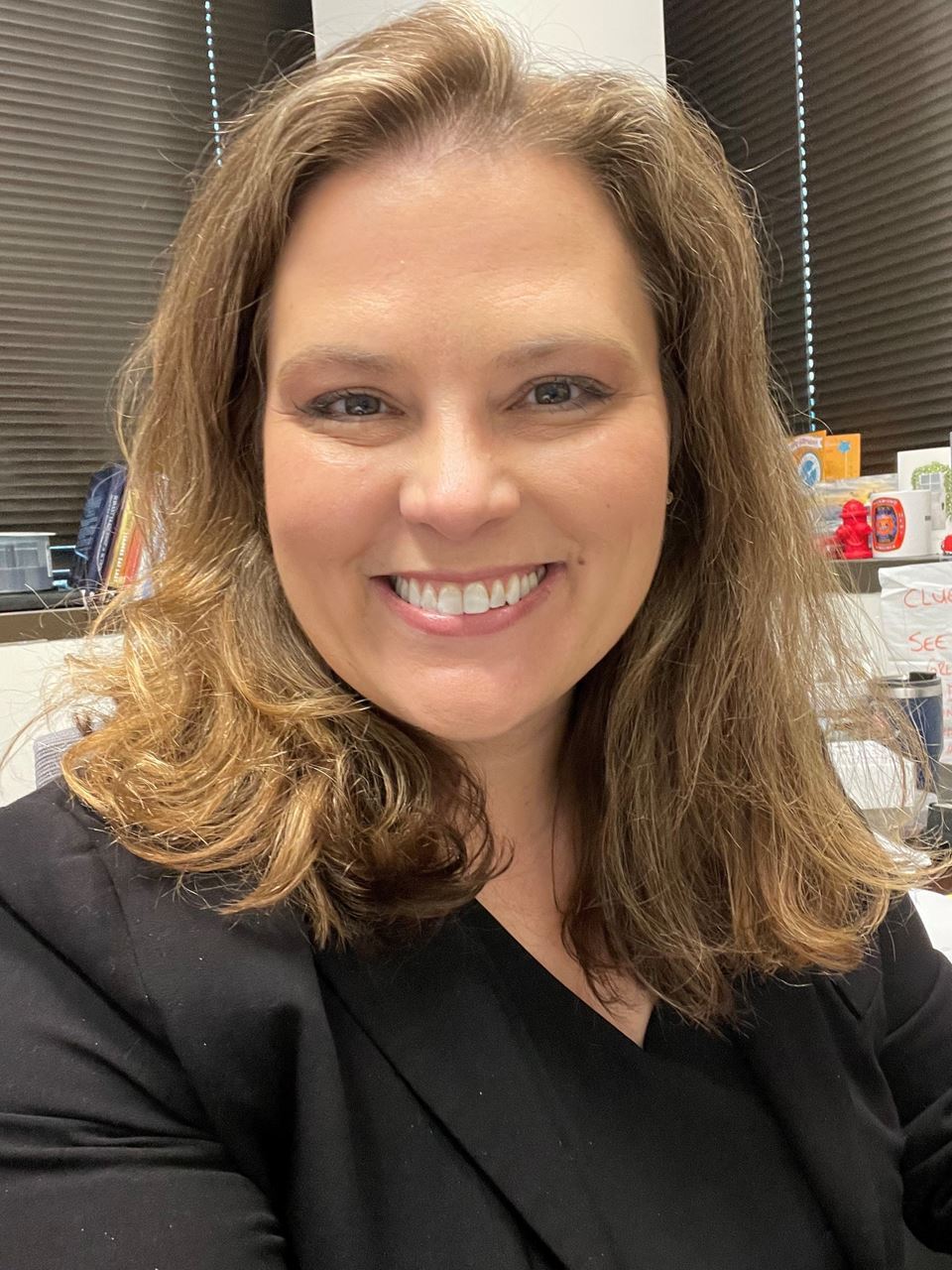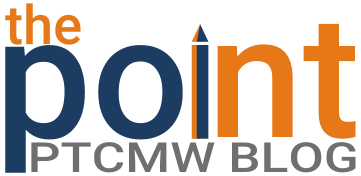Author: David Swiderski, PTCMW Blog Editor
Today's post is a brief introduction to this year's PTCMW board members. These individuals bring a wealth of expertise and enthusiasm to further PTCMW's mission. Each board member was asked to say a bit about themselves and why they chose to serve on PTCMW's board. Please extend a warm welcome to each board member and I look forward to their contributions to shaping the future of I/O psychology in the DC metro area and beyond!
President - Jennifer Flaig, Emergency Services Consulting International (ESCI)

Hello, I'm Jennifer Flaig, and I am honored to serve as the President of PTCMW for 2024. I currently serve as the Director of the Human Capital Division for Emergency Services Consulting (ESCI). In my role, I develop and direct testing and training programs for public safety departments throughout the United States. My journey into this leadership role for PTCMW was driven by a passion for I/O psychology and a commitment to create a space where professionals in I/O can come together, share knowledge, and collectively address the challenges we face, because, let’s be honest, we have challenging jobs! Having spent over 20 years in the field of assessment and selection, I have witnessed the incredible potential for growth and collaboration within our field. My vision for this year is to continue to build connections, foster mentorship opportunities, and create an environment where every member feels supported in their professional journey. Thank you for entrusting me with this opportunity to lead, and I'm excited to work with our incredible Board to bring meaningful experiences and networking opportunities for the PTCMW community!
Past President - Phil Walmsley, U.S. Office of Personnel Management

I am a Lead Personnel Research Psychologist in the U.S. Office of Personnel Management’s (OPM) Assessment and Evaluation section. We’re a team of federal employees assembled to assist with measurement initiatives focused on the employees, applicants, and customers of agencies across the U.S. Government. I conduct job analyses, develop assessment/measurement strategies, validate the use of a variety of pre-employment and leadership assessments, deliver trainings, and conduct large-scale data analyses. I serve as an advisor on the design of software as a service technology systems used governmentwide for talent management and assessment. I’ve also participated in personnel selection working groups held by several agencies. I’m a member of the editorial board of the International Journal of Selection and Assessment, received the Society for Industrial-Organizational Psychology’s Distinguished Early Career Contributions Award, and served as the 2023 President of the Personnel Testing Council of Metropolitan Washington. I received a M.S. in Industrial-Organizational Psychology from Missouri State University and Ph.D. in Industrial-Organizational Psychology from the University of Minnesota.
I recall attending my first PTCMW events in 2007, and in particular that year’s special event featuring Bob Guion. Ever since, I have found the twin aspects of professional education and networking to be of incredible value, and all within a setting of our community’s welcoming and collegial atmosphere. I joined the PTCMW Board in hopes of continuing that collaborative and expertise-enhancing spirit. It has been very rewarding to work with everyone involved in recent years’ Boards, and I look forward to seeing you at a future PTCMW event!
President Elect - Michael Heil, JPMorgan Chase

After several years of attending powerful events as a member, I wanted to serve on the board so I could more fully help support PTCMW and our professional community. I’m very excited that I now have the opportunity to do so as President-Elect.
I have close to 30 years of experience developing and validating skill-based assessments as both an internal and external consultant in both the public and private sectors. I’m currently employed by JPMorgan Chase, where I’m responsible for supporting and leading assessment projects related to the design, development, implementation, and on-going monitoring of talent assessments for employee selection and development. I’m also an Adjunct Professor at American University, where I’ve taught I/O psychology for over 22 years. I also continue to serve as a member of the University of Maryland Baltimore County (UMBC) I/O Psychology Advisory Board.
I graduated from Kansas State University in 1997 with my Ph.D. in I/O psychology.
Vice President - Christopher Whiting, University of Maryland

Hello, my name is Christopher Whiting, and I am a Management Consultant for one of the largest technology consulting organizations where I develop people and lead the organization through change. I have a passion for people and their professional and personal development. I chose to serve on the PTCMW board because of the organization’s commitment to continuing the development of I/O professionals and students. I have benefited from the programming and want to give back by furthering the mission of PTCMW. Outside of my professional career, I give my time to efforts that uplift and improve the lives of those in disadvantaged communities. I enjoy creating new experiences through travel, museum visits, and creating digital art. I am a graduate of University of Houston and on track to receive my M.P.S. in I/O Psychology from the University of Maryland in May 2024. I am looking forward to a wonderful year with PTCMW.
Secretary - Tori Bakeman, HumRRO

I was born and raised in Oklahoma and attended the University of Oklahoma for undergrad where I was a research assistant in an I/O Psychology lab. Upon graduating, I worked in HR for about two years and interned in Professional Learning and Leadership Development while obtaining my Master’s in I/O Psychology from Baruch College. While I initially thought that I was more interested in pursuing the “O” side of the field, it was through my coursework that I realized my love for selection/assessment and all things data. I moved from NYC to the DMV about one week after graduating to join the Human Resources Research Organization (HumRRO) where I am currently a Research Scientist. At HumRRO, my work primarily involves assessment development for government and private sector clients. My day-to-day activities include project management, analytics, and facilitation of SME workshops. I have been a member of PTCMW since relocating to the DMV and have found that the organization’s events are fun opportunities to connect with like-minded individuals. I wanted to join the board to be more involved in the organization and the broader I/O community. I am excited to continue meeting and learning from others in our field and look forward to serving as Secretary!
Treasurer - Peter Butucel, U.S. Navy

Hello, PTCMW members! I am Peter Butucel, and I currently serve as your Treasurer. I joined PTCMW in 2021 to expand my professional network and to grow my expertise in the I/O field. Soon after joining the organization, I answered a call for volunteers and started serving in various roles, starting from supporting the Vice President for Programs with the Fall Event, as Secretary in 2022, and now as Treasurer for 2023-2024.
In my professional role, I am a senior advisor to the Chief of Navy Chaplains at the Pentagon. My responsibilities include advising Navy admirals on workforce staffing, professional development, and policy. To that end, I assist with the development and execution of a corporate strategy to develop competent leaders of character with the personal connections to lead effectively and the knowledge to create, build, and sustain the spiritual readiness of warfighters in both the Navy and Marine Corps.
I hold a Master of Science degree in Industrial-Organizational Psychology from Liberty University. In 2021, I was selected by the Navy to participate in the Secretary of the Navy Tours with Industry program as a Military Fellow. During my tenure, I worked in the Learning & Development department at Hilton corporate in McLean, VA, where I was part of a small team that developed the company's strategic plan for lifelong learning. As a result, Hilton became the first in the industry to offer robust educational opportunities at no cost to their team members.
When I am not working, I love to travel, explore new places around the DMV with my family, and SCUBA dive.
Recorder - Kenzie Hurley, PDRI by Pearson

Hi! My name is Kenzie Hurley and I'm the 2024 Recorder for PTCMW. I chose to join the board because, as a recent graduate, I found that this would be a fantastic opportunity to network with people in my field and make connections in the DMV area. Outside of PTCMW, I work full-time as a Consultant at Personnel Decisions Research Institutes (PDRI). My work largely involves assessment-related research for a variety of clients in both private and public sectors. I received my Doctorate in Industrial-Organizational (I/O) psychology from Clemson University in 2023 and my Master's in I/O psychology from the University of West Florida in 2021.

